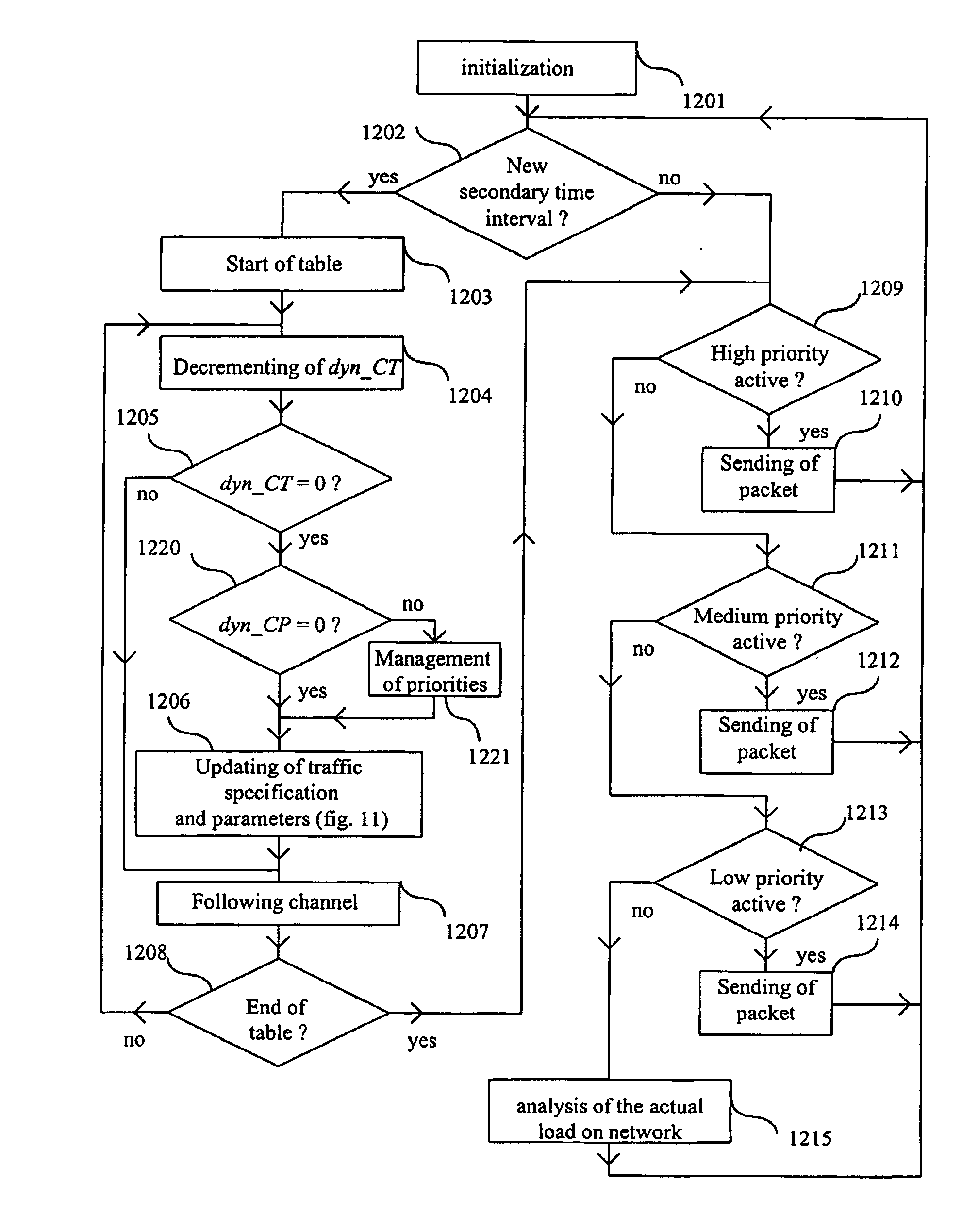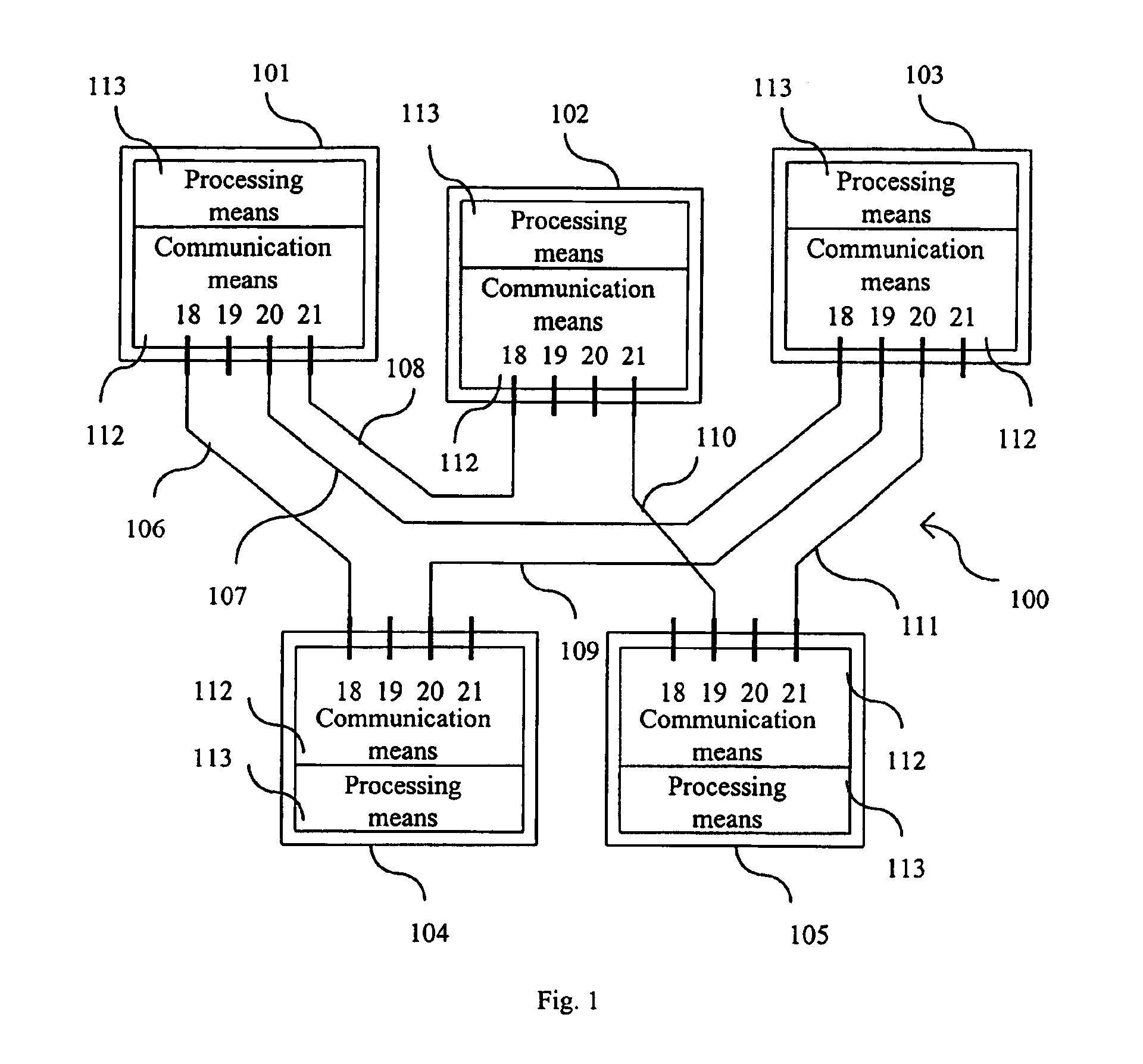Method and device for communicating information
a communication method and information technology, applied in the field of communication methods and devices, can solve the problems of increasing the risk of congestion, increasing the ratio of propagation time to transmission time, and wasting resources in the network, so as to avoid congestion of the network, improve coherence of information on the network, and determine the suitability of transmission
- Summary
- Abstract
- Description
- Claims
- Application Information
AI Technical Summary
Benefits of technology
Problems solved by technology
Method used
Image
Examples
Embodiment Construction
[0243]Throughout the present application the terms “communication devices” and “communication means” have the same meaning and designate the same combinations of means which are objects of the present invention.
[0244]The preferred embodiment manages three specific service classes, predictive (in connected mode), guaranteed (in connected mode) and elastic (in non-connected mode), on a packet switched network.
[0245]FIG. 1 shows five items of multimedia equipment 101 to 105 in a packet switched network 100, connected together by six links 106 to 111. Each item of multimedia equipment has a communication means 112 and a data processing means 113. The communication means 112 enables the processing means 113 to open a connection dedicated to connected traffic (predictive or guaranteed real-time traffic) and then to generate this traffic, or else to directly generate a non-connected traffic (elastic traffic).
[0246]When the multimedia equipment 101 sends a data packet to the multimedia equi...
PUM
 Login to View More
Login to View More Abstract
Description
Claims
Application Information
 Login to View More
Login to View More - R&D
- Intellectual Property
- Life Sciences
- Materials
- Tech Scout
- Unparalleled Data Quality
- Higher Quality Content
- 60% Fewer Hallucinations
Browse by: Latest US Patents, China's latest patents, Technical Efficacy Thesaurus, Application Domain, Technology Topic, Popular Technical Reports.
© 2025 PatSnap. All rights reserved.Legal|Privacy policy|Modern Slavery Act Transparency Statement|Sitemap|About US| Contact US: help@patsnap.com



